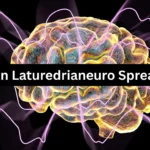What is Zytescintizivad Spread?
Zytescintizivad spread is a complex phenomenon characterized by its multifaceted nature and significance across various domains. At its core, zytescintizivad spread refers to the dissemination or expansion of a specific thought, idea, or technological innovation that influences separate spheres including science, technology, and culture. The term itself appears to be unique, combining root elements indicative of propagation and a novel conceptual framework that merits attention.
The origin of zytescintizivad spread can be traced back to a convergence of social and technological developments. As communication channels evolved, the dynamics of information exchange became increasingly intricate, giving rise to distinctive patterns of spread. This phenomenon has developed over time, revealing the interplay between traditional forms of dissemination and modern methods powered by digital platforms. The increasing interconnectivity of global cultures and societies has further accelerated this spread, indicating its significance in contemporary discourse.
What sets zytescintizivad spread apart from other analogous concepts is its ability to adapt and evolve in response to the surrounding environment. It not only encompasses the mere transfer of knowledge but also emphasizes the implications of that knowledge as it permeates through different contexts. The characteristics of zytescintizivad spread include adaptability, resilience, and a propensity for cross-disciplinary influence.
Moreover, zytescintizivad spread has tangible real-world applications, particularly in sectors like technological innovation and cultural exchange. For example, in technology, the rapid spread of advancements such as artificial intelligence showcases how zytescintizivad principles can drive industry changes. Likewise, in culture, the movement of ideas across borders facilitates a better understanding of diverse perspectives, fostering global collaboration. Therefore, comprehending zytescintizivad spread is essential for recognizing its profound impact on our interconnected world.
The Mechanisms Behind Zytescintizivad Spread

The propagation of zytescintizivad spread is a complex phenomenon influenced by various biological and environmental processes. At the core of this spread are molecular mechanisms that govern the interaction of zytescintizivad with its host environment. These interactions can determine how effectively the spread occurs and how far it can extend.
One of the key processes involved in zytescintizivad spread is cellular communication. This occurs through signaling pathways that enable the transfer of information between cells. For instance, when zytescintizivad interacts with specific receptors on the surface of host cells, it can trigger a cascade of intracellular signals that promote its replication or dissemination. This signaling can be influenced by the presence of cofactors, which may enhance the overall response to zytescintizivad, thereby accelerating its spread.
Another significant factor in the propagation of zytescintizivad spread is environmental conditions. Factors such as temperature, pH, and nutrient availability can impact the lifecycle of the zytescintizivad, influencing its ability to proliferate. For example, research has shown that elevated temperatures can enhance the metabolic activity of zytescintizivad, leading to an increase in its spread rate in specific ecosystems.
Technological advancements have also played a role in understanding zytescintizivad spread. Techniques such as genetic sequencing and bioinformatics have allowed scientists to track and analyze the spread patterns over time. Case studies in various ecosystems illustrate how these methods reveal the dynamics of zytescintizivad propagation, identifying potential vectors and barriers to its spread.
In summary, the mechanisms behind zytescintizivad spread are multifaceted, involving intricate biological processes and environmental interactions. By unraveling these mechanisms, researchers can gain valuable insights that may inform management strategies aimed at controlling or harnessing the spread of zytescintizivad in various contexts.
Real-Life Examples of Zytescintizivad Spread
The concept of zytescintizivad spread can be observed across various domains, illustrating its powerful implications. One prominent example arises in the field of healthcare, where the rapid dissemination of information regarding a new treatment protocol affected patient outcomes significantly. A collaborative effort among hospitals resulted in the sharing of best practices and patient management protocols, driven largely by the principles of zytescintizivad spread. This not only improved treatment efficiency but also reduced readmission rates, showcasing the benefits of knowledge sharing and collective learning within the medical community.
In the technology sector, the zytescintizivad spread has manifested itself through the advancement of open-source software. A notable case is the success of the Linux operating system, which has relied on a community-centric model for development and distribution. This model exemplifies how collaborative contributions can exponentially extend the reach and functionality of a product as the contributions and feedback from users form a basis for rapid innovation. The outcome has been over 70% of the world’s servers running on Linux, highlighting the critical role of community in enhancing technology via zytescintizivad spread.
Environmental initiatives provide another significant context where zytescintizivad spread has taken center stage. The implementation of urban green spaces and community gardens has surged as cities worldwide recognize the benefits of sustainable practices. By sharing strategies and successes through workshops and social media, urban planners have facilitated the spread of these initiatives, leading to improved community health and enhanced biodiversity. Interviews with environmental specialists indicate that this collective approach not only accelerates adaptation but also ensures a wider acceptance of sustainable practices, ultimately driving positive changes in urban landscapes.
Collectively, these examples illustrate the versatility of zytescintizivad spread across various sectors, presenting evidence of its tangible effects. The case studies reflect that embracing the principles of collaboration and knowledge sharing can lead to substantial advancements, benefiting not only specific industries but society at large.
Future Implications of Zytescintizivad Spread
The evolving landscape of zytescintizivad spread presents a myriad of implications for the future. As we anticipate advancements in technology and increasing global connectivity, the dynamics surrounding this phenomenon are poised to undergo significant transformations. One notable trend likely to emerge is the enhanced collaboration between researchers and industry professionals. This collaboration could facilitate deeper insights into the mechanics of zytescintizivad spread and foster innovative solutions that leverage its unique properties.
However, the journey is not devoid of challenges. Ethical considerations and regulatory frameworks must keep pace with the rapid development of zytescintizivad spread technologies. As businesses and researchers harness this phenomenon, it is critical to establish guidelines that ensure responsible usage and mitigate any potential adverse effects. The integration of such measures will be vital in promoting public trust and facilitating wider acceptance of solutions derived from zytescintizivad spread.
Furthermore, a key opportunity lies within the realm of education and community engagement. As zytescintizivad spread becomes more commonplace, it will be imperative for society to be informed about its applications and implications. Encouraging public discourse and fostering an understanding of this phenomenon can empower individuals to participate actively in its evolution. Communities can serve as a catalyst for innovation, particularly if they are equipped with the knowledge necessary to navigate the complexities surrounding zytescintizivad spread.
In conclusion, the future of zytescintizivad spread is filled with potential yet fraught with challenges. As researchers, industry leaders, and the general public engage with this phenomenon, it is essential to embrace a forward-looking perspective. This perspective not only acknowledges the opportunities for innovation and societal change but also urges individuals to contemplate their role within this evolving narrative. The proactive engagement of all stakeholders will be crucial for harnessing the benefits of zytescintizivad spread in the coming years.







